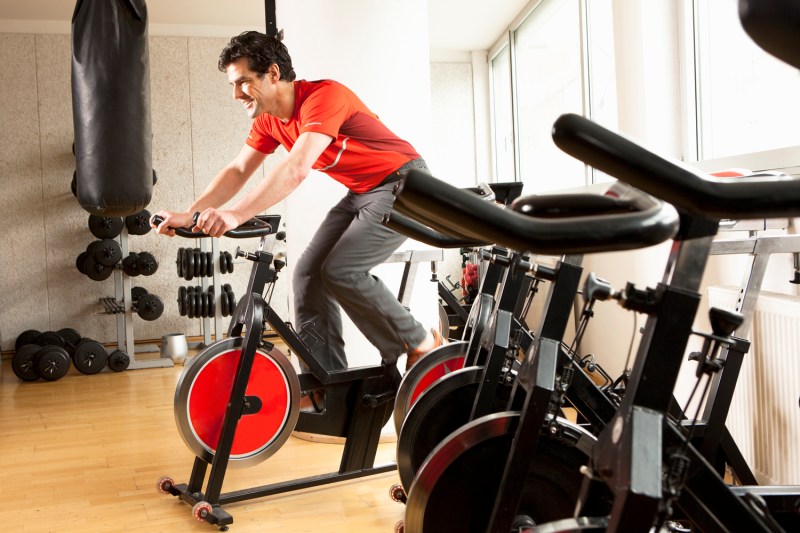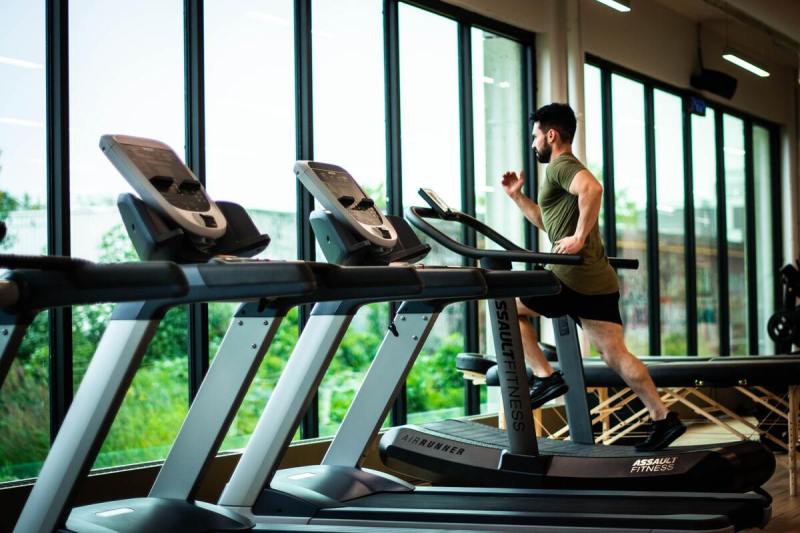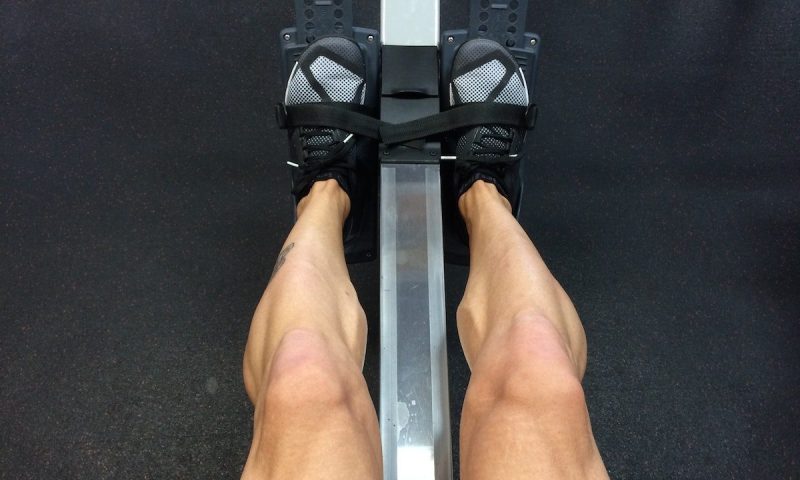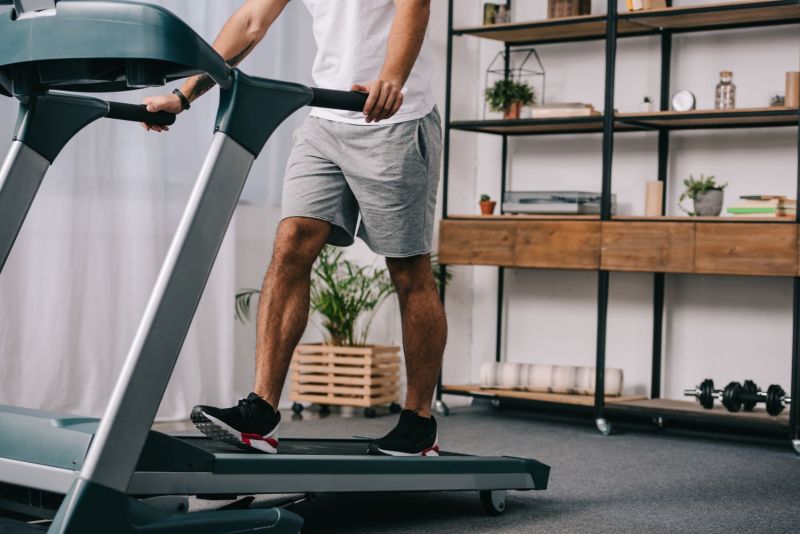No matter what your fitness goals are, maintaining a healthy level of endurance is essential for everyday life, as well as longevity. There are many ways you can get your cardio workouts in, but what option is the best? As a trainer, I have always had clients asking me which form of cardio they should prioritize to get optimal results. So, which wins in the stationary bike vs. treadmill debate?
Both pieces of equipment have their benefits, but you may find one is better for your home gym or to be prioritized in a commercial gym than the other. Keep reading to learn more.
Which is better: A stationary bike or a treadmill?

To compare stationary bikes and treadmills to determine which is a better piece of exercise equipment, we look at the workout difficulty or intensity, the versatility of the exercise machines, the muscles worked on a stationary bike vs. a treadmill, the calories burned and fat loss potential, adjustability, the injury risk, the enjoyment, and the practicality for purchasing.
Stationary bike vs. treadmill: Workout difficulty

Ultimately, it’s difficult to compare the difficulty or workout intensity on a stationary bike versus a treadmill because it is highly dependent on the settings used. For example, doing a vigorous HIIT workout on a spin bike or indoor cycle with the resistance cranked up, and the cadence high will be more intense than walking leisurely on a treadmill at no incline.
That said, in general, treadmill workouts have the potential to be more challenging than exercise bike workouts, particularly if spin bikes or indoor cycles are excluded and just basic stationary bikes are considered. Indoor cycles provide a more demanding workout than standard upright stationary bikes because you can stand up on the pedals, the flywheel is heavier and requires more power and strength to spin, and the riding position requires greater core and upper body activation.
To increase the difficulty on an exercise bike, the resistance and cadence (pedaling speed) can be increased, whereas on a treadmill, the pace and incline can be increased. In general, most athletes find their heart rate gets higher at a similar level of effort on a treadmill because running and walking are weight-bearing activities and require nearly all major muscles of the body, while cycling is non-weight-bearing and is mostly just a lower-body workout.
Stationary bike vs. treadmill: Versatility

When considering the versatility of stationary bikes versus treadmills, treadmills edge out exercise bikes in terms of the range and variety of workouts you can do. While you can structure your efforts similarly on either exercise machine (for example, a long, steady-state endurance workout, a HIIT or interval workout, etc.), the fact that you can walk or run on a treadmill and even implement an incline opens the doors to a wider range of exercises and workouts. This can help prevent boredom and allow you to work different muscles for greater fitness improvements.
Stationary bike vs. treadmill: Muscles worked

Stationary bikes predominantly work the quads, hamstrings, and calves, with the glutes to a lesser extent. Spin bikes also strengthen the shoulders, core, and back to some degree. Standing on a spin bike turns it into a total-body exercise. Walking and running work all the muscles in the lower body, as well as the core and arms, provided you don’t hold on to the handrails. Increasing the incline targets the calves, glutes, and hamstrings more.
Stationary bike vs. treadmill: Adjustability

Most exercise bikes allow for seat height, handlebar height, and resistance adjustments. Some indoor cycles also permit additional adjustments, like fore/aft adjustments of the seat and handlebars, and a greater number of resistance levels. The speed and incline on a treadmill can be changed, though the most basic treadmills often do not have an incline function.
Stationary bike vs. treadmill: Which is better for weight loss?

Regardless of the type of exercise you do, the number of calories you burn depends on your weight and the intensity and duration of your workout on your exercise bike vs. Treadmill. In general, running on a treadmill burns more calories per minute than riding an exercise bike, and riding an exercise bike burns more calories than walking on a treadmill.
Harvard Health Publishing reports that 30 minutes of moderate-intensity stationary biking burns about 210 calories for a 125-pound person, 252 calories for a 155-pound person, and 292 calories for a 185-pound person. A 30-minute vigorous stationary bike workout burns approximately 315 calories for a 125-pound person, 378 calories for a 155-pound person, and 441 calories for a 185-pound person.
For comparison, running for 30 minutes at 6 mph (10-minute miles) burns about 295 calories for a 125-pound person, 360 calories for a 155-pound person, and 420 calories for a 185-pound person, so jogging at a moderate pace will burn about as many calories as a vigorous stationary bike workout.
Finally, 30 minutes of walking at the moderate pace of 3.5 miles per hour (17 minutes per mile) burns about half the number of calories of riding a stationary bike at a moderate intensity (107 calories for a 125-pound person walking versus 210 on an exercise bike, 133 calories for a 155-pound person walking versus 252 on an exercise bike, and 159 calories for a 185-pound person versus 292 on an exercise bike).
Stationary bike vs. treadmill: Which is better to lose belly fat?

Should you use a treadmill or exercise bike for belly fat? Exercise bikes and treadmills can both support losing weight and burning fat. The more calories you burn, the greater the caloric deficit you’ll generate, which then translates to more weight loss. However, research demonstrates that HIIT training is the most effective way to burn belly fat and encourage weight loss because it boosts your metabolic rate even after your workout is over.
Building lean body mass is also an effective way to lose body fat because muscle tissue is more metabolically active than fat tissue. Therefore, crank up the resistance on an exercise bike or the incline on a treadmill to help build muscle.
Stationary bike vs. treadmill: Injury risk

Stationary bikes are typically safer than treadmills in terms of reducing the risk of injury. Cycling is a low-impact exercise, so it puts less stress on bones, joints, and connective tissues than running or walking on a treadmill. If you deal with chronic injuries and pain, an exercise bike may be a smarter choice.
Stationary bike vs. treadmill: Enjoyment

You can now find both exercise bikes and treadmills with integrated tablets for streaming immersive workouts or entertainment. Some people are naturally drawn more to walking and running, while others love cycling, so the matter of enjoyment when stationary bikes vs. treadmills really comes down to personal preference.
Stationary bike vs. treadmill: Footprint and purchasing considerations

Although the prices of stationary bikes and treadmills span a wide range, stationary bikes, and indoor cycles are usually less expensive than treadmills. If you are on a budget, you’re more likely to find a high-quality exercise bike for the money than a decent treadmill. Cheap treadmills often have poor motors, a limited range of speeds, no incline, and a poorly cushioned deck. They may also lack onboard workout programs and durability. Plus, once the motor goes, the treadmill is rendered useless unless you’re going to spend a significant amount of money repairing it.
On the other hand, there are many good, inexpensive indoor cycles and stationary bikes, and they have fewer parts that will wear out (no motor, etc.). Exercise bikes also take up less floor space, are easier to move around and assemble, and spin bikes often require no power.
Stationary bike vs. treadmill: Transition to outdoors

One final factor that you might want to consider when weighing an indoor bike against a treadmill is how easily the habits, muscle memory, and muscle groups that you will develop inside can translate to outdoor exercise. The treadmill is a good equivalent to an outdoor walk, jog, or run. The muscle groups worked while on a treadmill are very close to those worked while outdoors, and with the set workouts and programs that are often built into the treadmill, you can make for intervals of high and low-intensity speed and work. However, unless you are willing to pay for a premium treadmill that can offer changes in incline, hills are not something you can train for indoors.
Exercise bikes, on the other hand, don’t offer as close an experience to the “real thing” as the treadmill. Outdoor cycling requires more work in your core and other parts of your body. Turns and keeping balance are not something that can be recreated for stationary indoor exercise. Hills, on the other hand, are more easily approximated on a stationary bike. By increasing resistance, the increased work required of your legs is like that of a period going uphill. In fact, the stationary bike might offer better than can be found in your local area, depending on the lay of the land around you. Hill exercises outdoors can be hard to find if you live in the plains, for example.
Frequently asked questions

Can you lose belly fat by riding a stationary bike?
Unfortunately, you cannot choose where you want to lose fat when doing any form of exercise. However, riding a stationary bike can help reduce belly fat as you burn fat throughout your body. According to an NIH study, “The combination of indoor cycling and diet is recommended to improve the lipid profile, lose weight, and reduce blood pressure. Furthermore, indoor cycling alone may also enhance aerobic capacity.”
Is 30 minutes walking better than a stationary bike?
Both 30 minutes of walking and stationary biking offer great benefits, but the better option comes down to what your goals are. Walking is a low-impact excerise and ideal for beginners or those seeking light activity, while stationary biking burns more calories and builds leg strength. Choose the activity that aligns with your fitness level and preferences.




